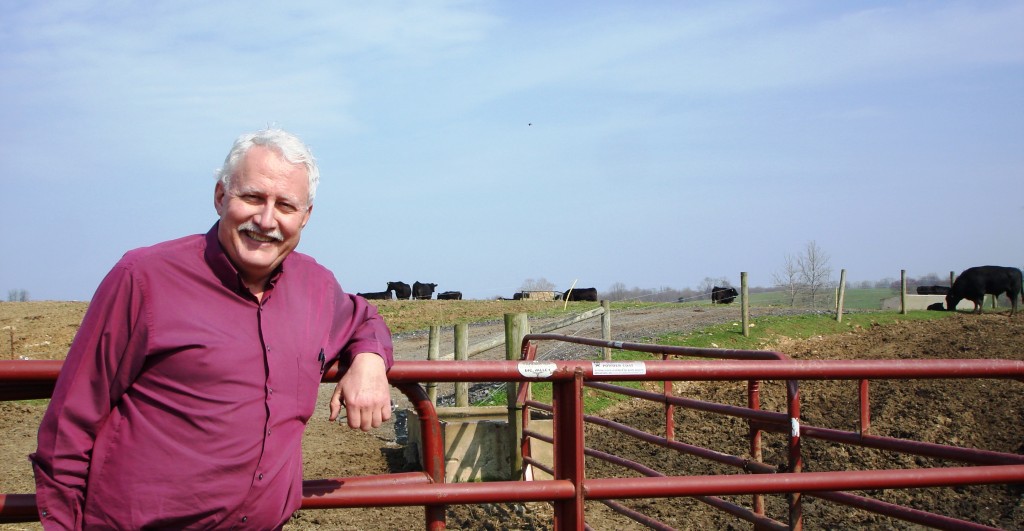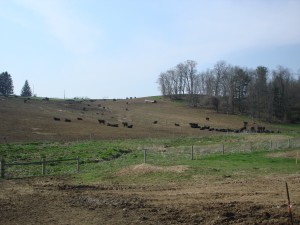Grain-fed vs. grass-fed beef — and somewhere in between?
Thanks to Michael Pollan‘s book The Omnivore’s Dilemma and the documentary Food, Inc., more people have become aware that the majority of cows in this country are raised on a grain-based diet for the last few months of their lives — and why that’s problematic for the health of the cows, the health of the humans who eat them, and the environment. The short version: Grains such as corn and soy are cheap carbohydrates that make cows get fat fast (not unlike humans). But cows’ digestive systems were designed to handle a high-fiber diet of mostly fresh grass or hay, with some natural grains. High-grain corn and soy diets — and the feedlots in which they are stuffed with them — cause many cattle to get sick, and encourage the prevalence of antibiotic-resistant E. coli as well.
But as with many things in the food system, the grain vs. grass question isn’t black and white. Mike Brannon of Roseda Beef, Bon Appétit’s Farm to Fork partner in Monkton, MD, has a response to the “grain concern”; he believes that ranchers should actively manage the nutritional needs of the cow through a combination of grain and grass. Such a diet can be healthy for the cow and the land, and result in a quality end-product.
“Man survived in Ethiopia for thousands of years, but now we are able to flourish, because we have access to the proper nutrition. It’s the same with cows today,” says Mike. “Sure, a cow can survive on grass alone, but he flourishes when fed the proper balance of grass and grain. That certainly doesn’t mean feeding the cow 100% grain. But it also doesn’t mean feeding them 100% grass, either.”
At different times of year, depending on where the pasture is, the quality and nutritional value of its grass changes, Mike argues. It’s therefore important to augment the cows’ diet with whatever the grass isn’t naturally giving them. For example, in the spring, when the grass is just starting to grow again, it’s very tender and extremely high in protein — but low in calories. According to Mike, that’s when you want to augment the cow’s diet with a little grain to give them some extra calories. In the fall, however, once the grass has been able to mature some, it’s much more fiber dense, lower in protein, and higher in calories. So in the fall, the cows need extra protein.
Mike also emphasizes that actively managing the cow’s diet isn’t only about the cow’s health — it’s about the health of the whole farm. To reference the Lion King, it’s an example of “the circle of life.”
This is how Mike put it: Healthier cattle equals healthier cow poop — which, when allowed to decompose and then is spread back on the pasture equals healthier soil, which equals more bugs, better flora and fauna, and higher-quality grass — which means healthier eats for the cow and healthier cattle … and the cycle continues.
So that’s one response to the grain question: What do you think?

